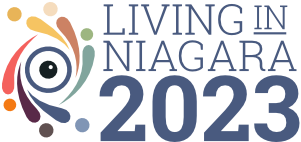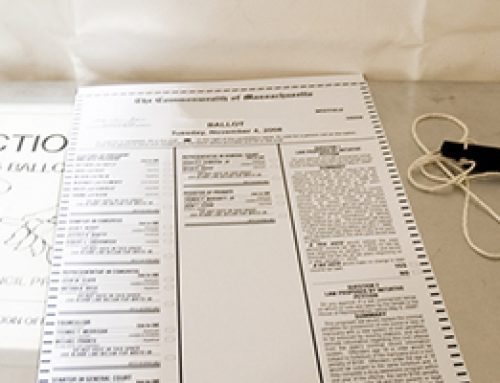Vezina and Crompton (2012) note that individuals who are religious in some manner, do have higher levels of volunteering, participation and giving. This is verified by data from the 2010 CSGVP (Canadian Survey of Giving, Volunteering and Participation) which shows that volunteers who are religious and attend services weekly gave more hours than other volunteers (Vezina and Crompton, 2012).
The many religious groups in Niagara provide spiritual care, social connections, donations and voluntarism in their own community and in the wider Niagara community.
Table 1. The Total Population in Private Households by Religion, National Household Survey (NHS), Statistics Canada, 2011
Note: St. Catharines-Niagara CMA does not include Grimsby and West Lincoln.
NHS data, St. Catharines – Niagara,CMA, Ontario. The table shows total, male and female data (appearing as column headers) for selected characteristics (appearing as row headers).
|
Characteristic |
St. Catharines – Niagara, CMA |
||
|
Total |
Male |
Female |
|
|
Total population in private households by religion |
383,965 |
185,945 |
198,020 |
|
Buddhist |
1,570 |
740 |
830 |
|
Christian |
286,085 |
133,555 |
152,530 |
|
Anglican |
34,475 |
15,710 |
18,765 |
|
Baptist |
6,680 |
3,025 |
3,655 |
|
Catholic |
132,315 |
62,620 |
69,695 |
|
Christian Orthodox |
4,655 |
2,305 |
2,350 |
|
Lutheran |
7,060 |
3,205 |
3,855 |
|
Pentecostal |
5,840 |
2,630 |
3,205 |
|
Presbyterian |
13,145 |
5,975 |
7,170 |
|
United Church |
29,930 |
13,380 |
16,550 |
|
Other Christian |
51,995 |
24,705 |
27,285 |
|
Hindu |
885 |
450 |
440 |
|
Jewish |
1,025 |
495 |
530 |
|
Muslim |
4,275 |
2,170 |
2,105 |
|
Sikh |
200 |
85 |
115 |
|
Traditional (Aboriginal) Spirituality |
185 |
95 |
85 |
|
Other religions |
1,070 |
460 |
615 |
|
No religious affiliation |
88,665 |
47,890 |
40,775 |
Source: Statistics Canada
Retrieved From: http://www12.statcan.gc.ca/nhs-enm/2011/dp-pd/prof/details/page.cfm?Lang=E&Geo1=CMA&Code1=539&Data=Count&SearchText=st.%20catharines&SearchType
=Begins&SearchPR=01&A1=All&B1=All&Custom=&TABID=1
Religion Mix Growth in Canadian Cities: A Look at 2006-2031 Projections Data
This paper focuses on the growth trajectories of religion mix ratios in selected census metropolitan areas of Canada between 2006 and 2031. The data was drawn from special tables of the microsimulation population projections carried out by Statistics Canada and released in March 2010.
Religion mix ratios including Non Christian to Christian, No religion to Religion and group specific ones were examined. The analysis found that the Non Christian to Christian ratio will double between 2006 to 2031 (from 15 to 30 per 100) while the No religion to Religion ratio will remain stable at about 26 per100 by 2031. Non Christian to Christian ratios will be equal or higher than 45 per 100 in cities such as Toronto, Abbotsford and Vancouver by 2031. No religion to Religion ratios will continue to be higher than average in most cities in British Columbia and other Western cities compared to others in the rest of Canada. To summarize findings latent class growth modeling and discriminant analysis were undertaken to classify cities in terms of prototypical patterns of growth and pinpoint characteristics of cities associated with these growth patterns.
Overall, findings suggest that greater intra-Christian and intra-Non Christian religious diversity will be seen across cities of various sizes and geographies and that they will coexist with the more secular pattern of the reporting No religion in the next two decades.
Source: Canadian Heritage, Fernando Mata, Policy Research Group, 2010
Retrieved From: http://ir.lib.uwo.ca/cgi/viewcontent.cgi?article=1018&context=wmc
Related to the above research, the following link will take you to table 10.1, below, included in the Living in Niagara-2011 report; the table provides related projected population information until 2031. https://www.livinginniagarareport.com/10-belonging-volunteering-giving-leadership-2011/having-a-religious-affiliation-in-niagara/
Changes in Religious Mix in Canada and Future Projections
The growth trajectories of religious mix in Canada and for selected census metropolitan areas (CMAs) 2006 to 2031 were developed by Mata Policy Research Group in 2010 using the micro-simulation population projections carried out by Statistics Canada and released in March, 2010
|
Area |
2006(‘000) |
Projected Pop. 2031 (‘000) |
2006 ratio |
2011 ratio |
2016 ratio |
2021 ratio |
2026 ratio |
2031 ratio |
|
St. Catharines-Niagara: Non Christian to Christian ratio |
404 |
433 |
3.0 |
4.3 |
5.2 |
6.2 |
7.5 |
8.5 |
|
All CMA’s: Non Christian to Christian |
22,141 |
31,032 |
15.0 |
18.2 |
21.2 |
24.2 |
27.2 |
30.1 |
|
St. Catharine’s- Niagara: No religion to religion ratios |
404 |
433 |
19.2 |
20.5 |
21.9 |
23.3 |
24.4 |
25.9 |
|
All CMAs: No religion to religion ratios |
22,141 |
31,032 |
22.1 |
23.2 |
24.1 |
25.0 |
26.7 |
26.4 |
Source: http://www.statcan.gc.ca/pub/91-551-x/91-551-x2010001-eng.pdf








